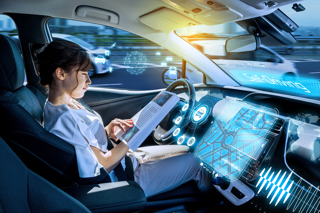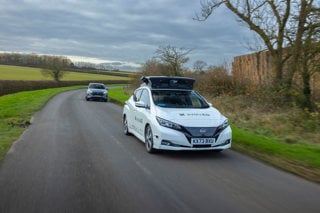UK insurers have set out minimum criteria for a vehicle's automated systems to clarify what a vehicle should be capable of doing to deserve the title 'automated'.
Matthew Avery, director of research at Thatcham Research, said: “The insurance industry welcomes the UK Government's commitment in the Automated and Electric Vehicles Bill to create a list of automated vehicles.
"It is crucial, therefore, that that there is a clear definition of what constitutes an automated vehicle.
"Regulators and insurers require this to classify and insure vehicles appropriately, while consumers need to understand the functionality and capability of the vehicle and their own responsibilities.
"Consequently, a system that needs the driver to control or monitor the vehicle in any way cannot be classified as automated.”
Ben Howarth, senior policy adviser for motor and liability at the Association of British Insurers, said: “Truly automated vehicles have the potential to drastically reduce road accidents, cut delays and make it easier for people who cannot drive to get around.
"However, there will inevitably be a transition period from today’s cars to the vehicles of the future, via vehicles which offer gradually increasing levels of autonomy.
"There is the potential for confusion during this interim stage when people could wrongly think their vehicles can be left alone to manage a journey independently.
"Insurers want to see manufacturers being absolutely clear about how they describe what their vehicles can do – and we think this checklist of 10 things which define a truly automated vehicle should be adopted across the industry to help give clarity to consumers.”
The 10 key features and performance criteria required of a truly automated vehicle:
- Naming: clearly describes automated capability
- Law abiding: complies with UK traffic laws and the Highway Code
- Location specific: functionality is limited to specific types of roads or areas via geo-fencing
- Clear handover: transfer of driving control follows a clear ‘offer and confirm’ process
- Safe driving: vehicle can manage all reasonably expected situations by itself
- Unanticipated handover: adequate and appropriate notice must be given if the vehicle needs to unexpectedly hand back driving control
- Safe stop: vehicle executes an appropriate ‘safe stop’ if unable to continue or the driver does not take back control
- Emergency intervention: vehicles can avoid or prevent an accident by responding to an emergency
- Back-up systems: safeguards step in if any systems fail
- Accident data: record and report what systems were in use at the time of an accident
Howarth said: We recommend that this is also criteria that Government and vehicle manufacturers could use to define what is and isn’t safe use of an automated car."
Avery added: “These descriptors will shine a light into the potentially dangerous grey area semi-automated vehicles could create.
"It is also important to shift the focus on to the safe performance of a vehicle’s automated system.
"We will therefore assess new vehicles against these criteria to determine if a car is assisted or automated and to drive standards in automated performance.
"This will require a constant dialogue with carmakers as the technology develops.”


















Login to comment
Comments
No comments have been made yet.